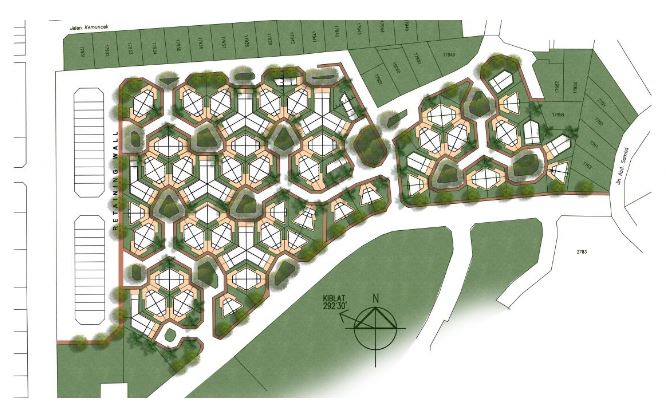Can the Built Environment Influence and Affect a Neighbourhood’s Sense of Community? (2012)
Neighbourhood Design and the Built Environment Dissertation – Planning for an improved quality of life has become a very hot topic in fields such as community development, urban design and urban planning. This research proposition has developed through the author’s interest in the way community links can be negatively affected through their surrounding built environment. ‘Sense of Community’ is vital to any urban neighbourhood and has a pivotal influence in the neighbourhood’s quality of life and level of civic engagement.
As the popularity of traditional neighbourhood developments increases, curiosity about what makes them popular increases also. Stated simply, what makes traditional neighbourhoods different from their conventional suburban competitors is an evident ‘sense of community’. One must ask the question which is what has happened to our sense of community. Certainly, modern technology is only one factor distracting attention away from traditional community values. The places where community members meet, formally or informally, are often scattered throughout the region.
In today’s society, virtual communities are formed through computer networking and the shared physical environment may consist of only computer hardware, phone lines and data bytes. Such virtual communities expand our understanding of the rest of the world, but often have little positive impact on the quality of life where we live. Specifically, this dissertation will consider the built environment and its influence in both promoting and disregarding community stability in our neighbourhoods today. This dissertation will respond to the following research questions:
- How can the built environment affect ‘sense of community’? The dissertation examines the influences that building form, public/private spaces and the availability of local neighbourhood facilities, can have on community engagement and also how this can be improved.
- How can Traditional Neighbourhood Design (TND) promote positive resident interaction within an urban neighbourhood? This dissertation will examine how the perceived character of a place can depend on users feeling safe and secure when moving around the streets thus promoting much face to face interaction. Also, whether or not a mix of land uses and housing types can influence can help promote this sense of familiarity and predictability most residents find comforting.
- What are the principles of good Neighbourhood Design and how has this been addressed in previous research? A detailed review of current literature will analyze what is meant by good quality neighbourhood design today.
- To provide a conclusion to this study that answers each objective and provides appropriate recommendations. A detailed conclusion will provide a critique of the current quality of neighbourhood design and also a list of recommendations of how the built environment can positively shape our communities.
- 14,000 words – 66 pages in length
- Excellent use of literature
- Good analysis of subject area
- Well written throughout
- Includes questionnaire
- Ideal for urban planning students
1 – Introduction
Subject Choice
Research Proposition
Aims and Objectives
Dissertation Outline
2 – Literature Review
Defining Urban Form and its Distinct Elements
Traditional Neighbourhood Design (TND) and its Various Principles
Quality of Neighbourhood Design
Neotraditional Development (New Urbanism)
Importance of Community Stability
Development of Civic Engagement and Participation through ‘Sense of Community’
Policy Context
National Planning Framework for Scotland
Designing Places, a policy statement for Scotland
South East Edinburgh Local Plan
Housing Diversity- South East Edinburgh Local Plan
Planning Advice Note PAN 81: Community Engagement – Planning with People
Craigmillar Urban Design Framework
Measuring Sense of Community
3 – Case Study Craigmillar Edinburgh
Case Study Choice
Methods
Policy Review
Interviews
Survey Design
Historical and Location Context
Location
Craigmillar’s Historical Background
Craigmillar Regeneration
Craigmillar Urban Design Framework
Craigmillar Master Plan
Local Community Council Groups
Promoting and Regenerating Craigmillar
Design Outcomes
Findings and Analysis of Primary Research
Analysis of Interview Results
4 – Conclusion and Recommendations
Conclusion
Objectives
Limitations
Recommendations
Connectivity
Public Realm
References
Appendix
Questionnaire

